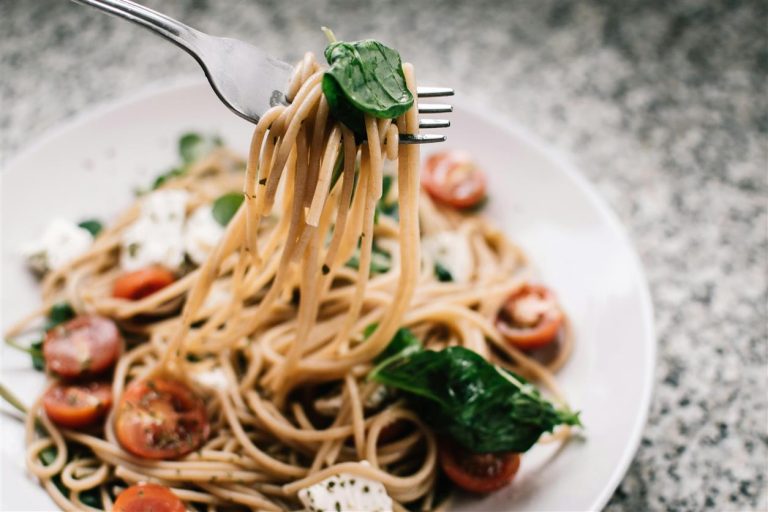
In today’s economic climate, the grocery store has become a source of quiet anxiety for many. Prices keep rising, paycheck growth lags behind, and buying nutritious food often feels like a luxury rather than a baseline. Between rent, bills, and everyday expenses, it’s easy to wonder: is it even possible to eat healthy without breaking the bank?
The answer is yes — but it requires intention, flexibility, and a bit of planning.
Eating well doesn’t mean filling your cart with superfoods or following a perfect meal plan. It means making thoughtful choices with what you have. And in an era of climbing food costs, that kind of approach matters more than ever.
Here’s how to stretch your dollar without compromising your health.

1. Start With a Realistic Budget and Stick to It
Before you start shopping, figure out what you can actually afford to spend each week on food. Don’t guess — write it down. Whether it’s $40, $75, or $150, your budget is your blueprint.
Once you know your number, reverse engineer your grocery list. Prioritize essentials like produce, protein, grains, and pantry staples before adding extras.
Keep track of spending over time — you’ll get better at estimating what fits in your range.
Tip: Use a calculator while shopping to avoid surprises at the checkout.
2. Embrace the Power of Planning
Impulse buying is a fast way to go over budget. Instead, sit down once a week and sketch out a rough meal plan. You don’t need to plan every bite — just get a sense of what you’ll eat for breakfast, lunch, dinner, and snacks.
This helps:
- Minimize waste
- Avoid unnecessary midweek store runs
- Use what you already have
When you go in with a plan, you’re less likely to get sidetracked by things you didn’t need in the first place.
3. Build Your Meals Around Affordable Staples
You don’t need a cart full of exotic ingredients to eat well. Focus on versatile, budget-friendly staples that can serve multiple purposes.
Go-To Affordable Options:
- Grains: brown rice, oats, quinoa, barley, whole grain pasta
- Legumes: lentils, chickpeas, black beans, split peas
- Frozen veggies: just as nutritious, often cheaper, and last longer
- Eggs: packed with protein and very flexible
- Seasonal produce: in-season fruits and veggies are always more cost-effective
- Canned goods: canned tomatoes, beans, tuna, or salmon can stretch meals easily
When you build meals around these basics, you’ll keep your costs down and your nutrition up.
4. Shop Smart — Not Just Cheap
There’s a difference between affordable and cost-effective. The cheapest foods (think: ultra-processed snacks) might fill you up quickly but won’t keep you full or nourished for long. You’ll end up hungry again — and spending more overall.
Instead, think about value per serving and nutritional density.
$2 spent on a bag of lentils will last longer and offer more protein than $2 on instant noodles. Same for a head of cabbage versus a small bag of chips.
Buying in bulk, especially for dry goods like oats, rice, beans, and spices, can save you money long-term.
5. Cook at Home — Even if It’s Simple
You don’t have to be a chef to make good food at home. In fact, some of the healthiest meals are also the most basic:
- Stir-fry with frozen vegetables, rice, and soy sauce
- Lentil soup with carrots, onion, and canned tomatoes
- Baked sweet potato topped with beans and salsa
- Scrambled eggs with toast and sautéed greens
Start with meals you enjoy, and learn one or two new recipes per month. Over time, you’ll build a mental library of go-to meals that are quick, healthy, and affordable.

6. Limit Food Waste — It’s Like Throwing Away Cash
Wasting food means wasting money. Every half-used bag of spinach or forgotten container of leftovers adds up.
Ways to reduce waste:
- Freeze leftovers before they go bad
- Keep a “use me first” section in your fridge
- Repurpose ingredients (e.g., turn old veggies into soup or pasta sauce)
- Buy only what you can realistically eat that week
Getting creative with what’s left in your fridge can turn into a fun challenge — and a surprising way to discover new favorite meals.
7. Rethink Protein
Protein is often one of the most expensive parts of the grocery bill. But it doesn’t always need to come from steak or chicken breast.
Affordable protein sources:
- Canned beans or chickpeas
- Eggs
- Tofu or tempeh
- Canned fish
- Greek yogurt (especially store-brand)
- Peanut butter and other nut butters
You don’t need a ton of protein in every meal — just enough to feel satisfied and support your body.
8. Use Grocery Store Sales to Your Advantage
Keep an eye on weekly store flyers. If a staple you use often is on sale — buy extra and store it. Over time, this helps flatten the cost curve of higher inflation.
Just be careful not to buy sale items you don’t really need. A deal is only a deal if you were planning to use it in the first place.
Tip: Many stores now offer digital coupons or loyalty discounts — take 5 minutes to check before heading out.
9. Meal Prep: Not Just for Fitness Influencers
Meal prepping doesn’t have to mean eating the same thing five days in a row. It’s just about doing a little bit of the work up front to save time, money, and decision fatigue later.
You can:
- Chop veggies ahead of time
- Cook a batch of rice or quinoa
- Make a pot of soup or stew for the week
- Pre-pack lunches or snack boxes
Even prepping a few elements makes it easier to avoid last-minute takeout.
10. Give Yourself Grace
There will be weeks when you rely on cereal for dinner or grab a $5 pizza because you’re stretched too thin. That doesn’t mean you’re failing.
Budgeting, like health, is about consistency — not perfection. Some seasons of life are harder than others. What matters is that you’re paying attention and doing what you can.
Small changes over time are more impactful than extreme changes that don’t last.
Final Thought: Eating Well Doesn’t Have to Be Expensive
In a high-inflation economy, eating healthy can feel like a balancing act. But with a bit of planning and a shift in mindset, it’s still within reach.
Focus on basics. Buy what you’ll use. Cook what you can. Waste as little as possible. And allow yourself to learn as you go.
Food should nourish not just your body — but your sense of agency and calm in an uncertain world.
You don’t need a trendy meal plan or expensive supplements. You just need a plan that works for you.






